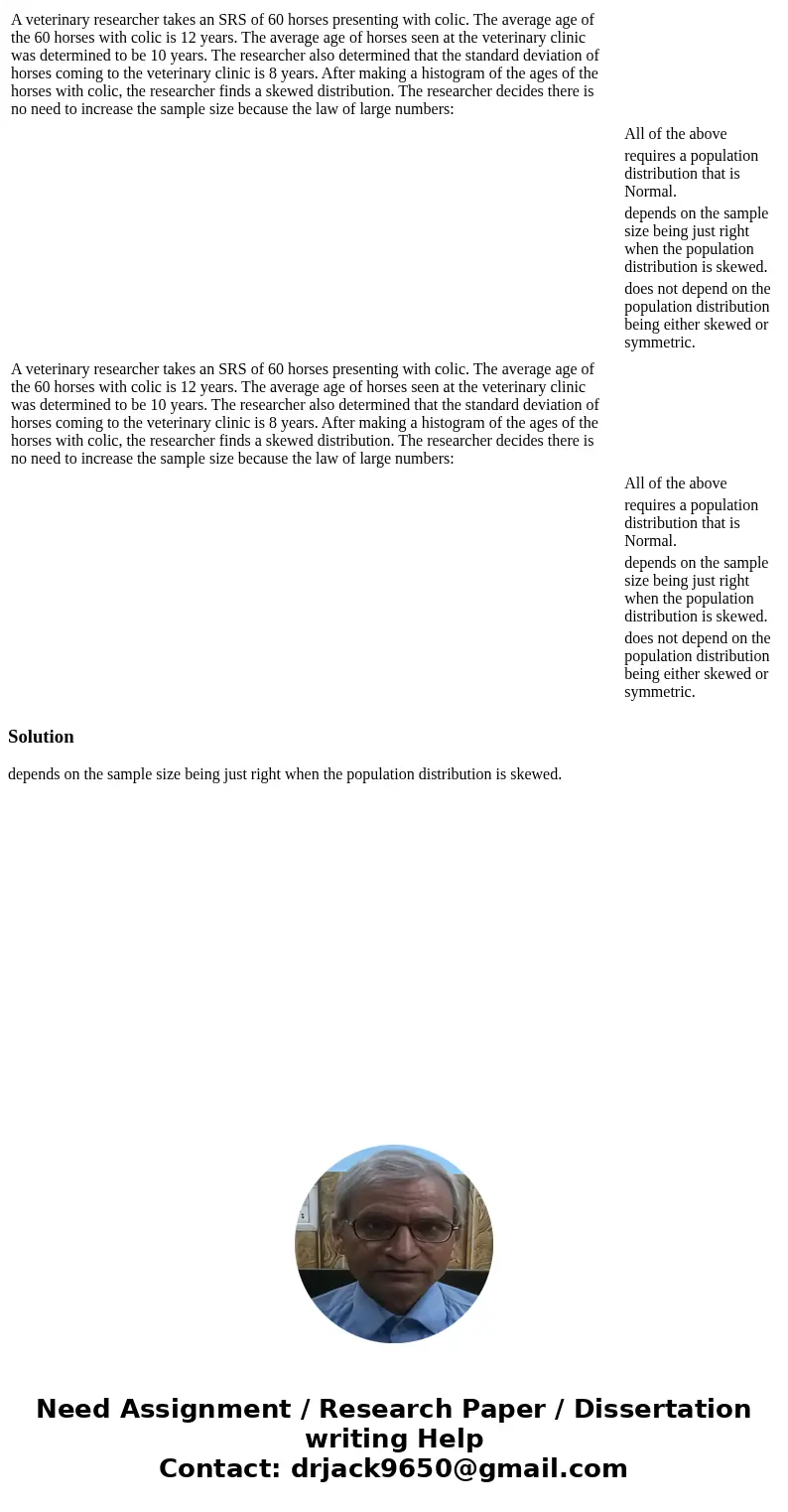| A veterinary researcher takes an SRS of 60 horses presenting with colic. The average age of the 60 horses with colic is 12 years. The average age of horses seen at the veterinary clinic was determined to be 10 years. The researcher also determined that the standard deviation of horses coming to the veterinary clinic is 8 years. After making a histogram of the ages of the horses with colic, the researcher finds a skewed distribution. The researcher decides there is no need to increase the sample size because the law of large numbers: |
| | All of the above | | requires a population distribution that is Normal. | | depends on the sample size being just right when the population distribution is skewed. | | does not depend on the population distribution being either skewed or symmetric. | |
| A veterinary researcher takes an SRS of 60 horses presenting with colic. The average age of the 60 horses with colic is 12 years. The average age of horses seen at the veterinary clinic was determined to be 10 years. The researcher also determined that the standard deviation of horses coming to the veterinary clinic is 8 years. After making a histogram of the ages of the horses with colic, the researcher finds a skewed distribution. The researcher decides there is no need to increase the sample size because the law of large numbers: |
| | All of the above | | requires a population distribution that is Normal. | | depends on the sample size being just right when the population distribution is skewed. | | does not depend on the population distribution being either skewed or symmetric. | |
depends on the sample size being just right when the population distribution is skewed.

 Homework Sourse
Homework Sourse